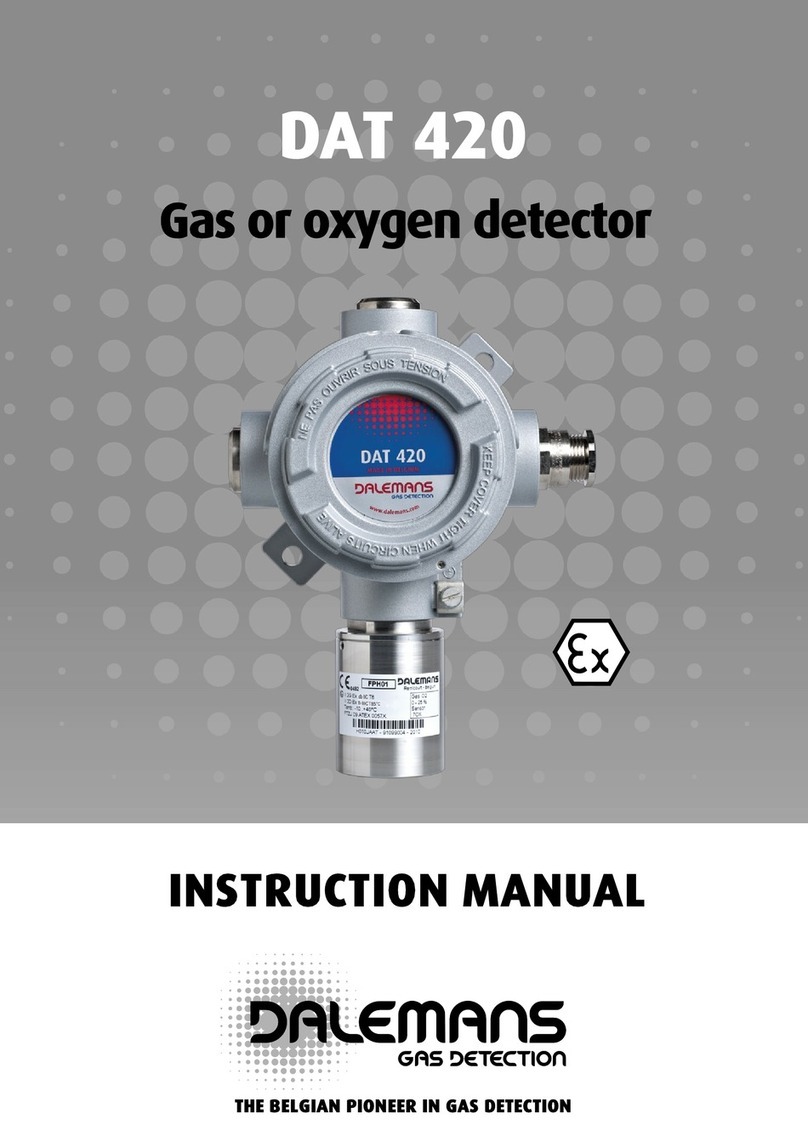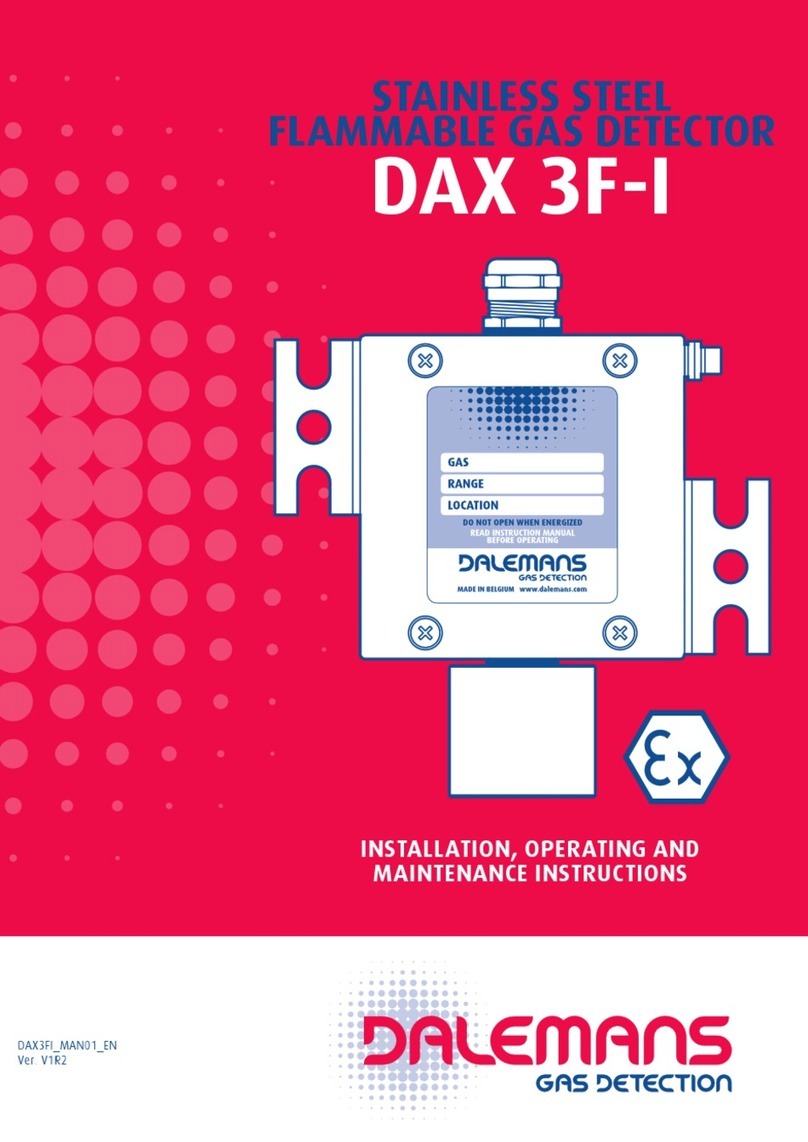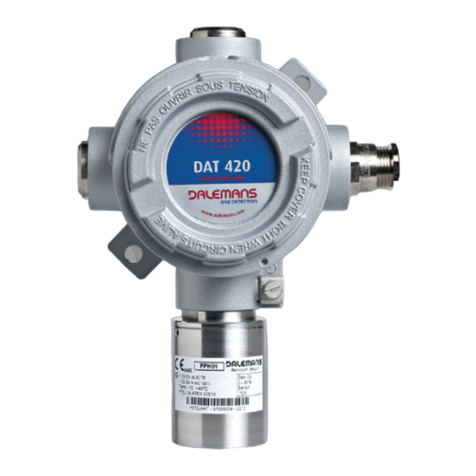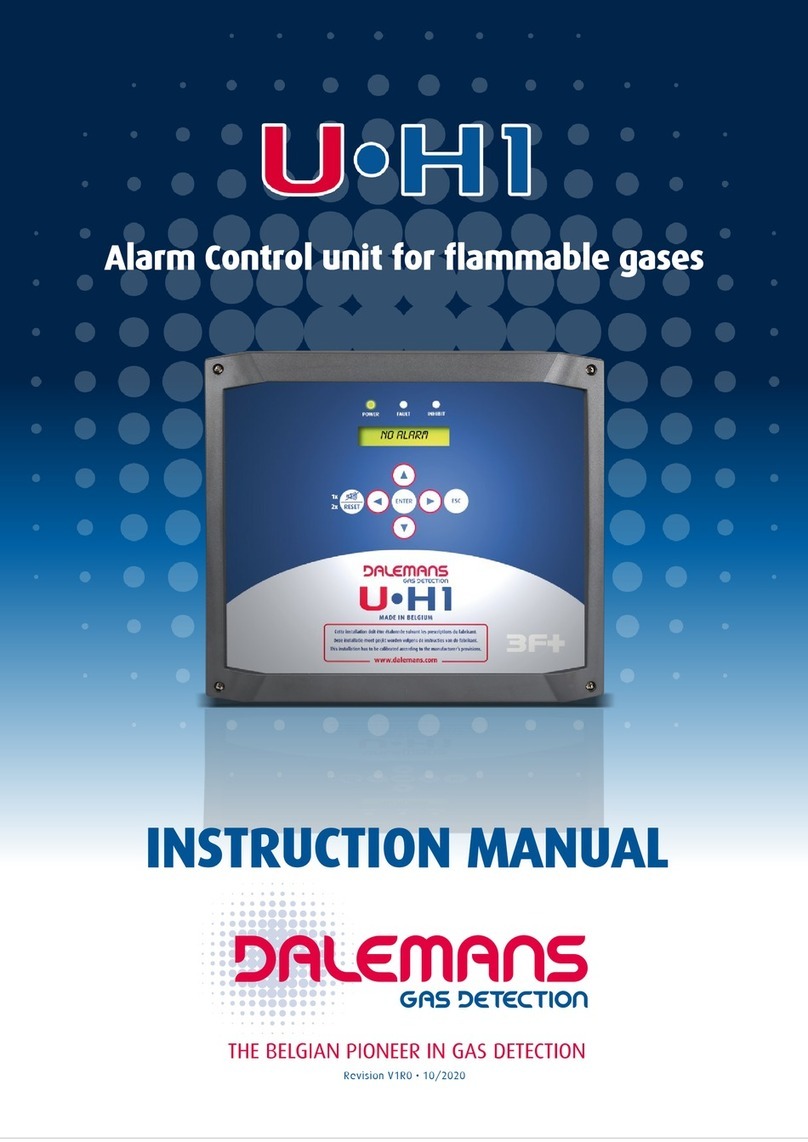
DAT420_MAN02_EN.docx • V1R1
1. WARNINGS
Prior to any service or maintenance attempt, ensure that local or national regulations relating
to the site or the monitored plant are met. The operator must have knowledge of the safety
procedure to follow in case of gas alarm.
Please follow the recommendations hereafter so as to avoid premature ageing of the detector and to
guarantee its optimal operation. These recommendations are general directives. Always refer to local
regulations/standards in force, such as the European directive 94/9/CE (Directive ATEX - annex II art. 1.0.3)
and, for example, the IEC 60079-14 and IEC 60079-29-2 standards, before proceeding with installation
works. Local regulations and standards in force always take precedence over manufacturer's
recommendations.
Gas detection equipment must be calibrated at least once a year, in some cases three or four times a year,
or even more to mitigate the loss of sensitivity of the sensor. This calibration must be performed according to
the procedure given by the manufacturer or his local representative, and in any case by qualified personnel
who will have been trained by Dalemans.
Modification, disassembling and total or partial destruction of the sensing head and its contents, of the cable
gland or of the junction box and its contents, may invalidate the essential safety requirements of the whole
plant.
No additional drilling is allowed on the junction box. The existing openings cannot be enlarged.
No additional terminal can be installed on the existing terminal block.
The length of the wires of the sensing head may not be modified.
Possible defective parts must be replaced by original parts delivered by Dalemans only.
Do not open the junction box or the sensing head while explosion hazard might be present. Only clean or
wipe the detector surface with a DAMP cloth so as to avoid the risk of electrostatic sparks.
Try to avoid, as much as possible, disconnecting the electrochemical sensor from the 4..20 mA transmitter or
storing the detector unpowered for a long period of time. These two situations might affect the sensor
performance and life-span.
Regularly remove dust from the sensing head and the junction box with a DAMP cloth ONLY so as to limit
the risk of electrostatic sparks.
The detector must be protected from any risk of mechanical impact.
The sintered metal filter must be checked and cleaned at least once a year. If contamination of the filter by
solvent, gas or gas vapour has occurred, the sensing head must be replaced and the inspection interval
should be reduced by a factor of 2.
This document must be read in conjunction with the installation manual of the concerned apparatus.
Declassify hazardous area PRIOR to carrying out maintenance, calibration or service and
check with a portable apparatus that no gas is present in the atmosphere.
































